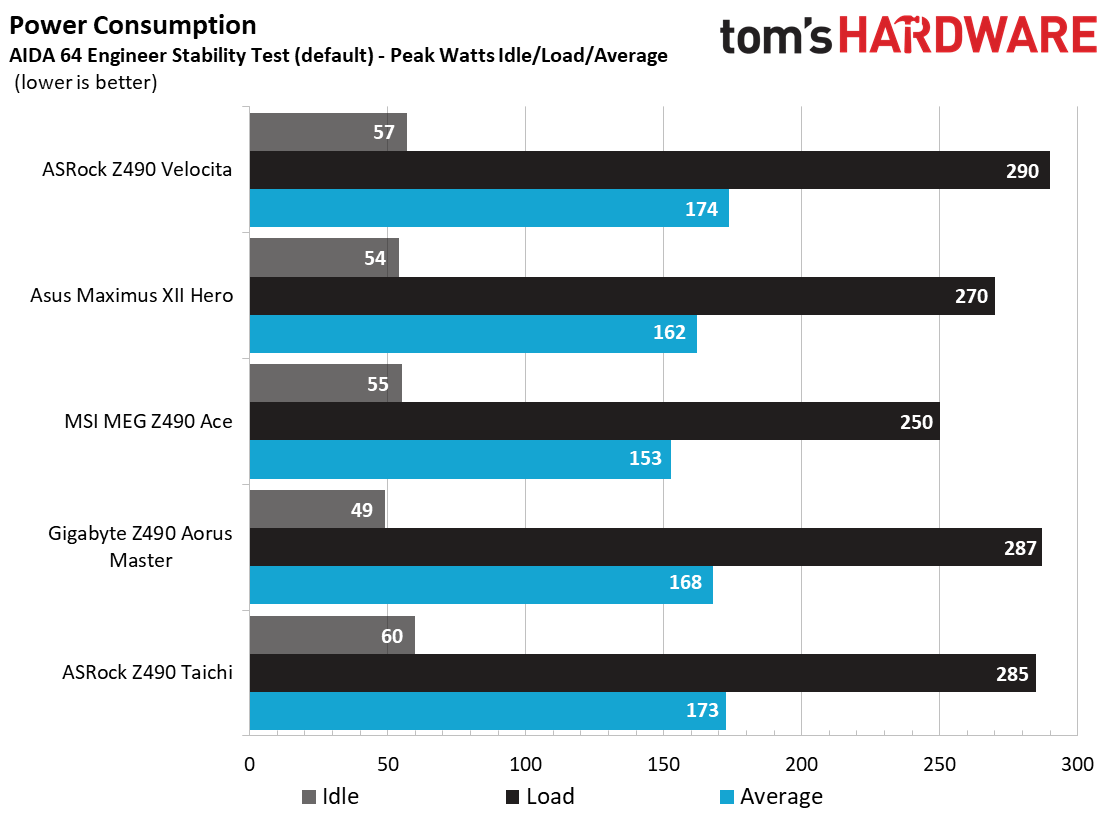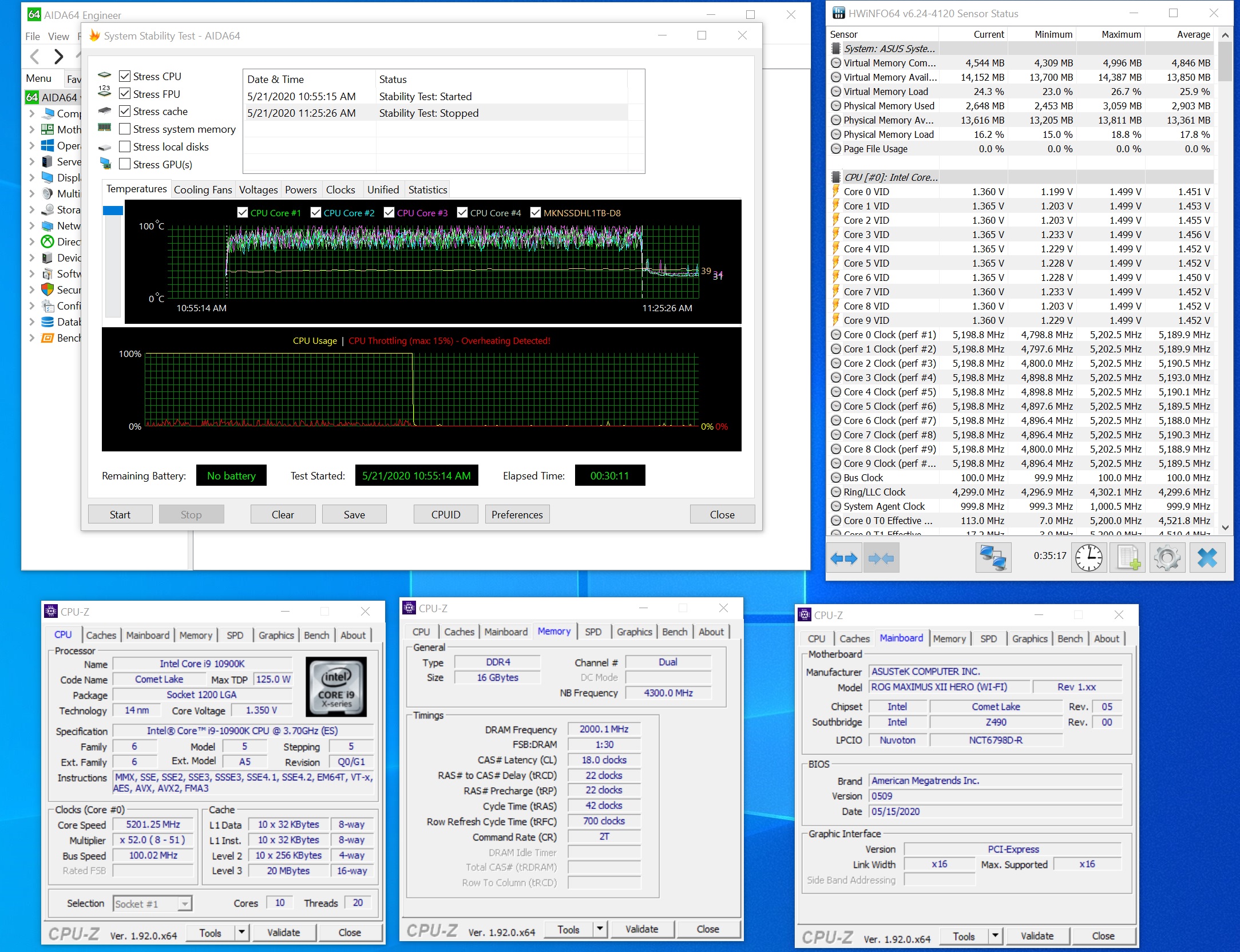Why you can trust Tom's Hardware
All standard benchmarks and power tests are performed using the CPU’s stock frequencies (including stock Thermal Velocity Boost), with all power-saving features enabled. Optimized defaults are set in the BIOS and the memory is set using the XMP profiles. For this baseline testing, Windows is set to High Performance (power testing uses Balanced so the PC idles properly).
*The ASUS ROG Strix Maximus XII Hero’s performance numbers have been updated since the ASRock Z490 Veloticata review. The results now reflect unlocked performance, which is the same as other boards.
Synthetic Benchmarks
Synthetics are a great tool to figure out if a board is running out of spec, as identical settings should produce extremely similar performance results. Advanced memory timings are the one place where motherboard makers can still optimize for either stability or performance though, and those settings can impact some testing.
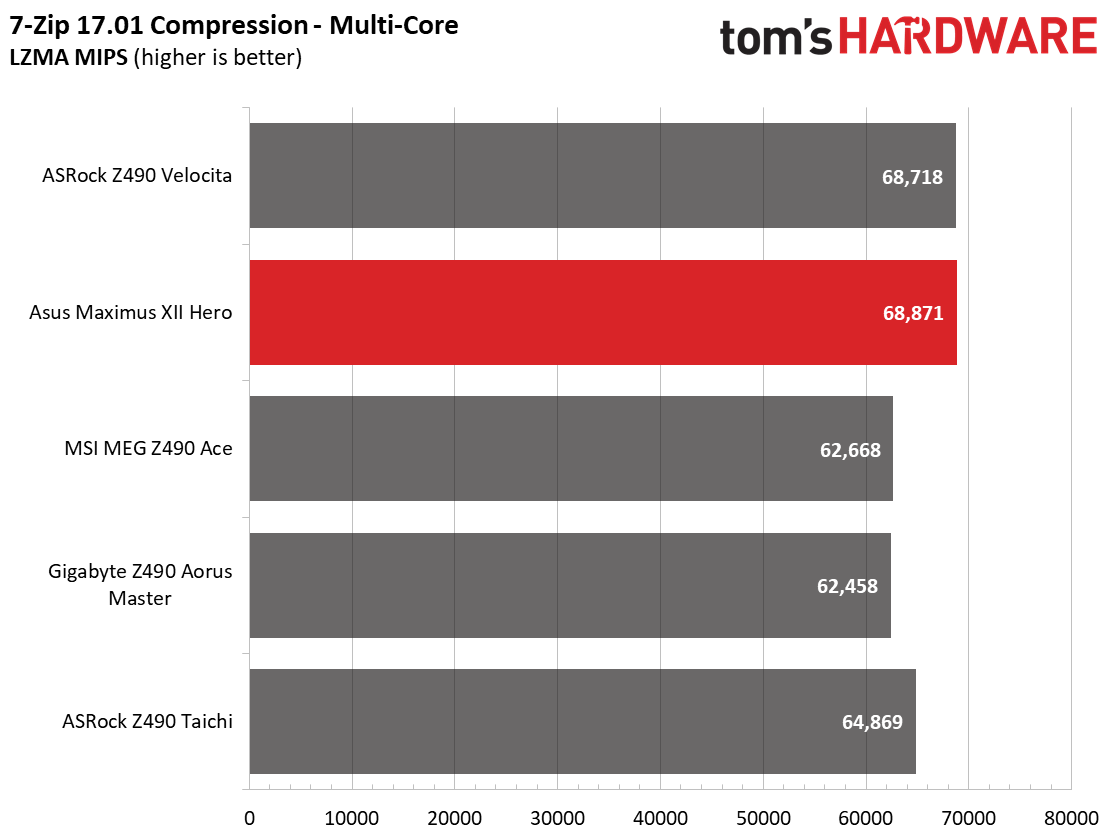
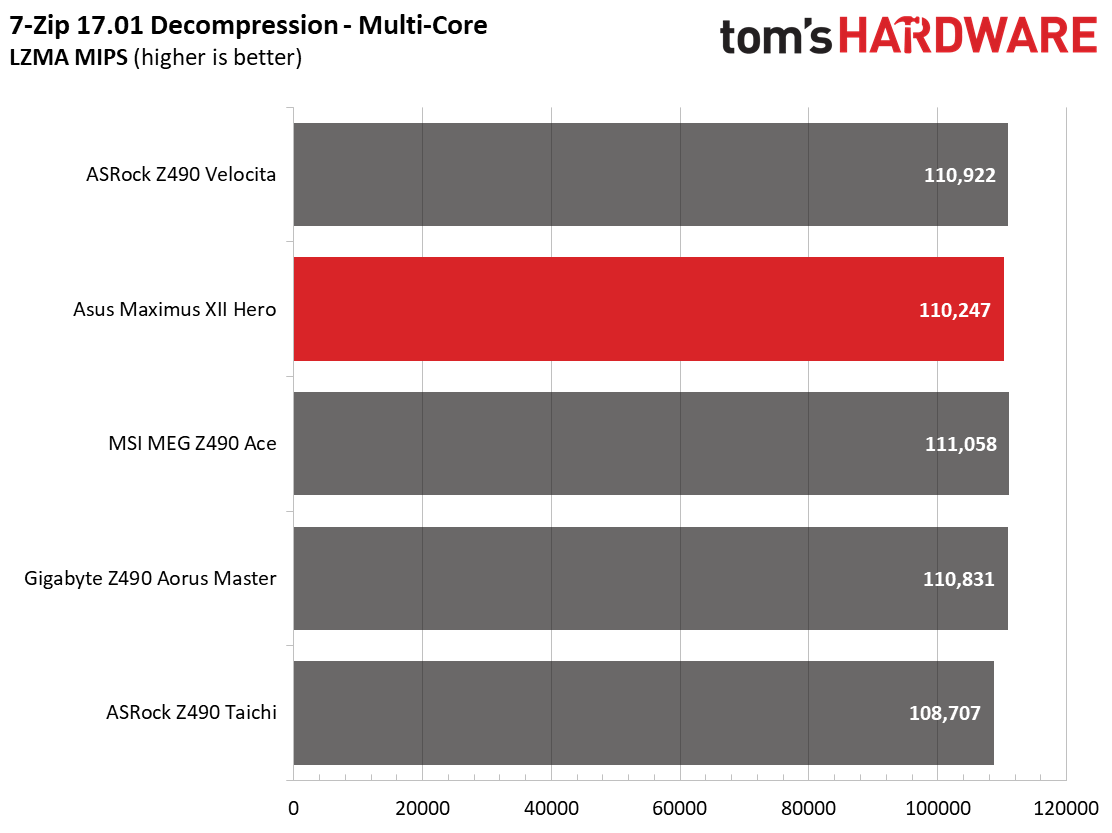
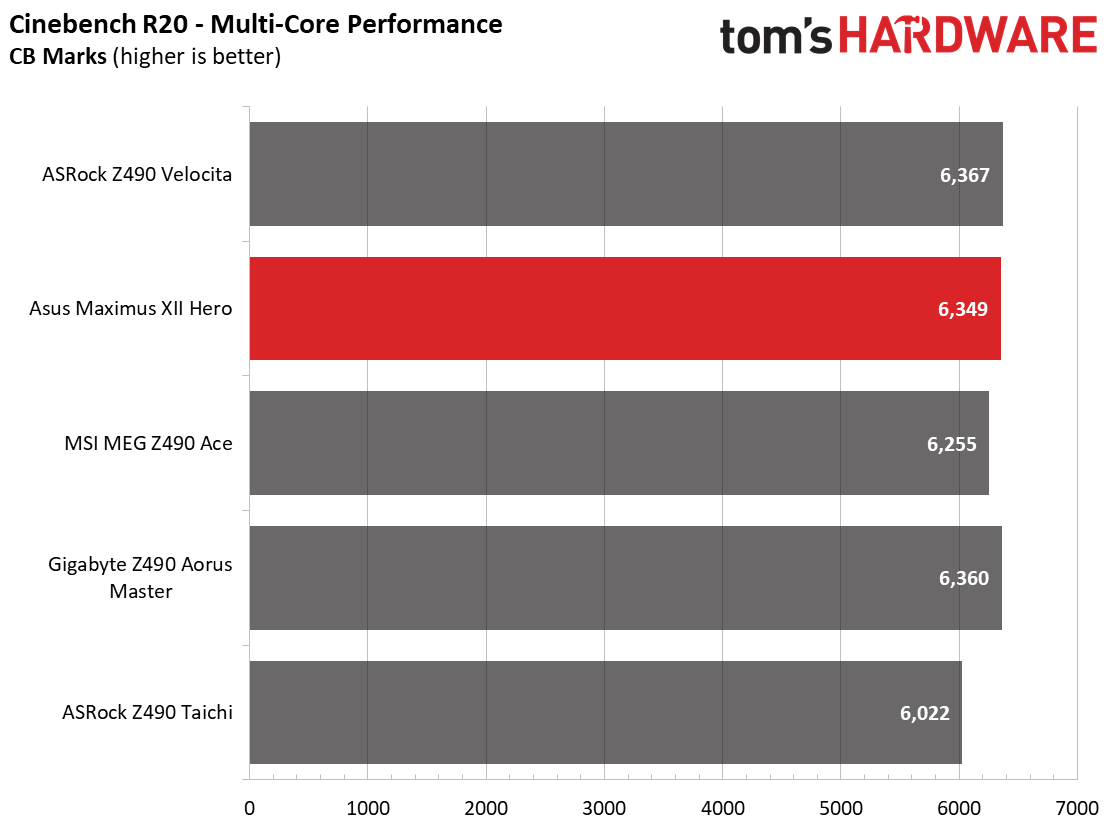
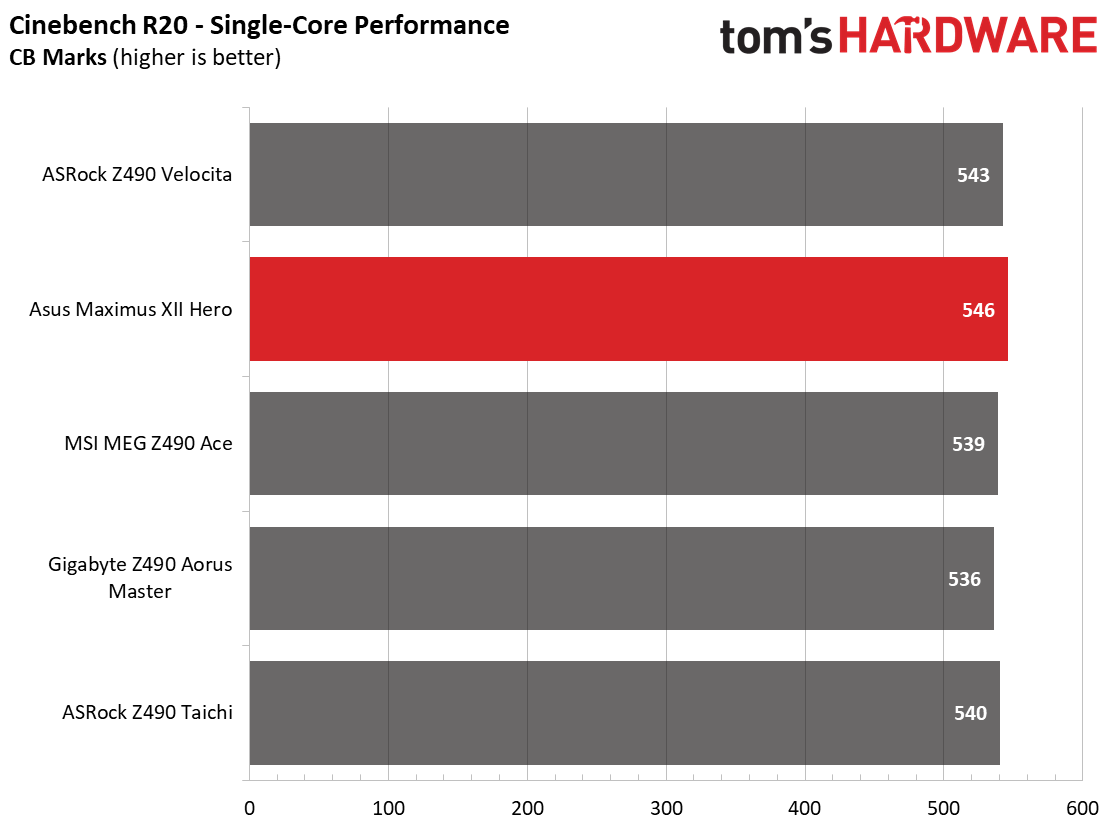
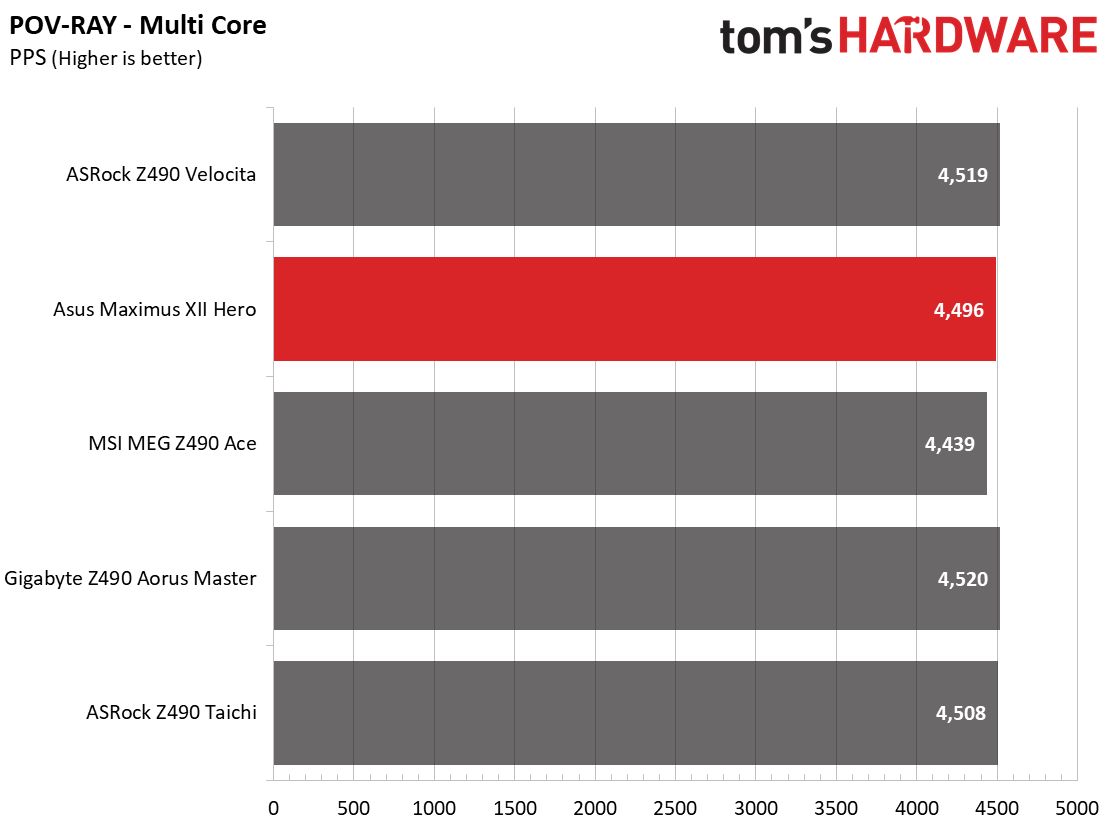
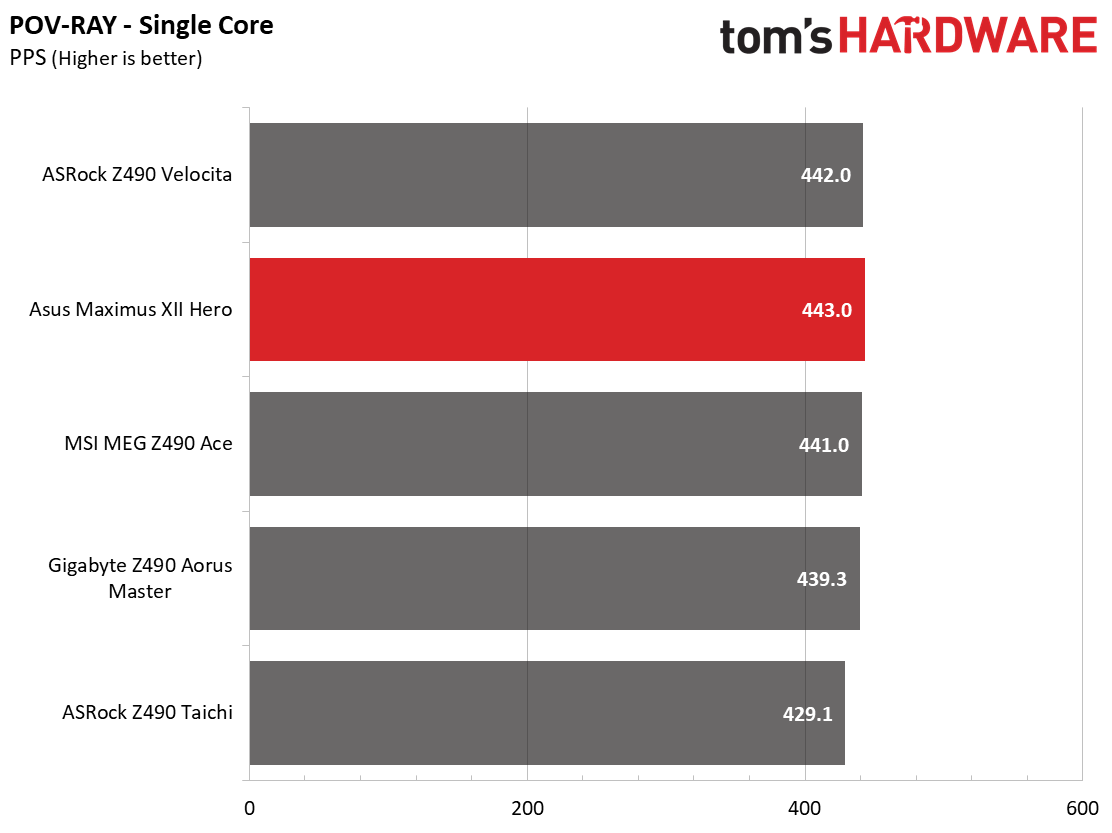
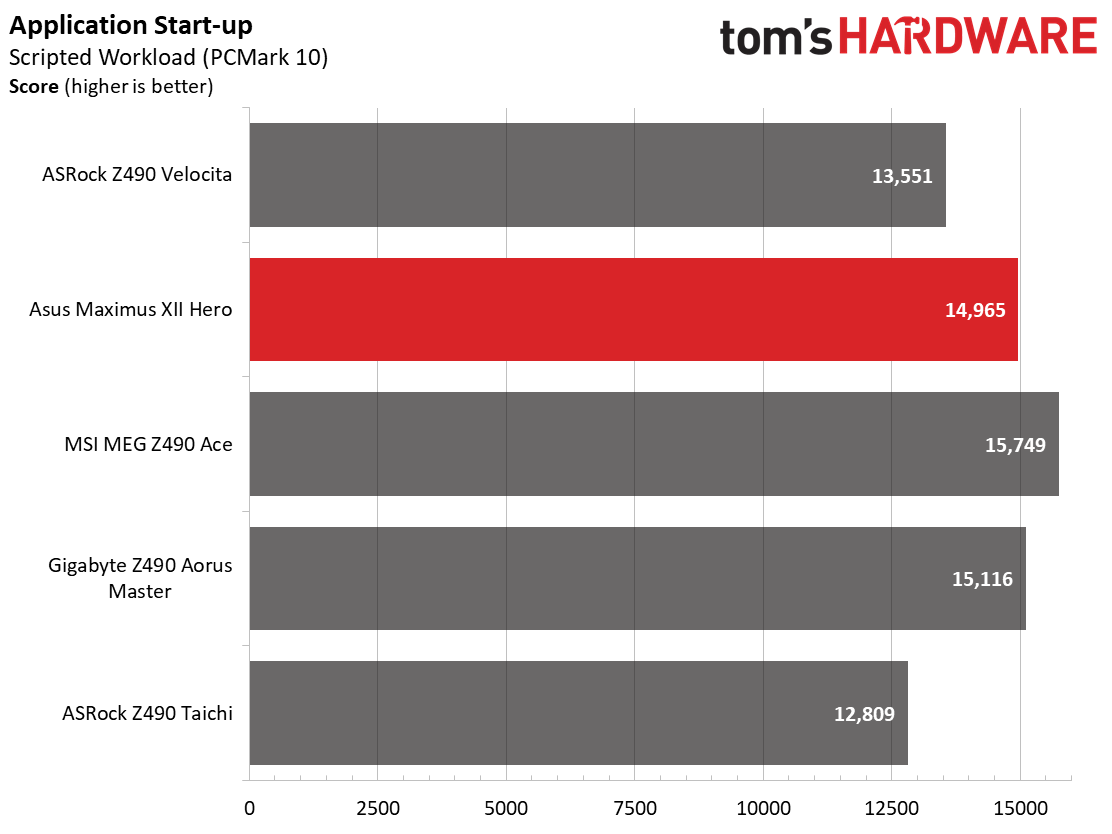


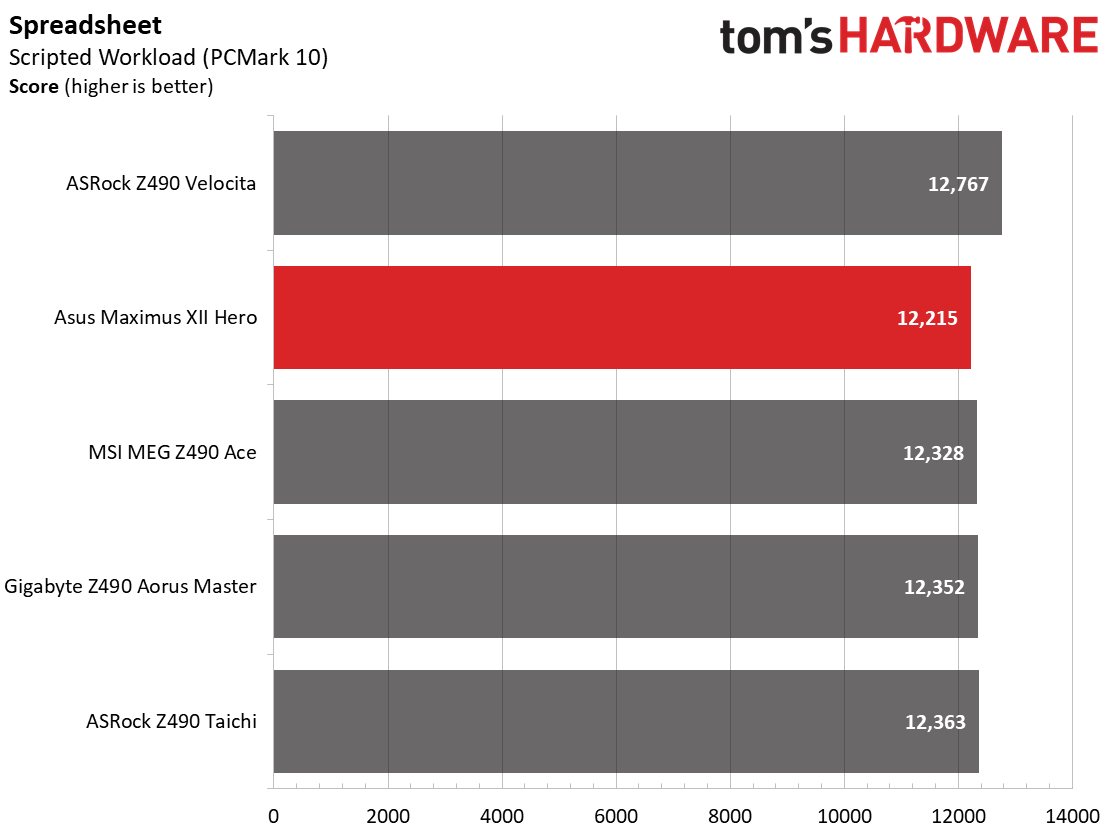
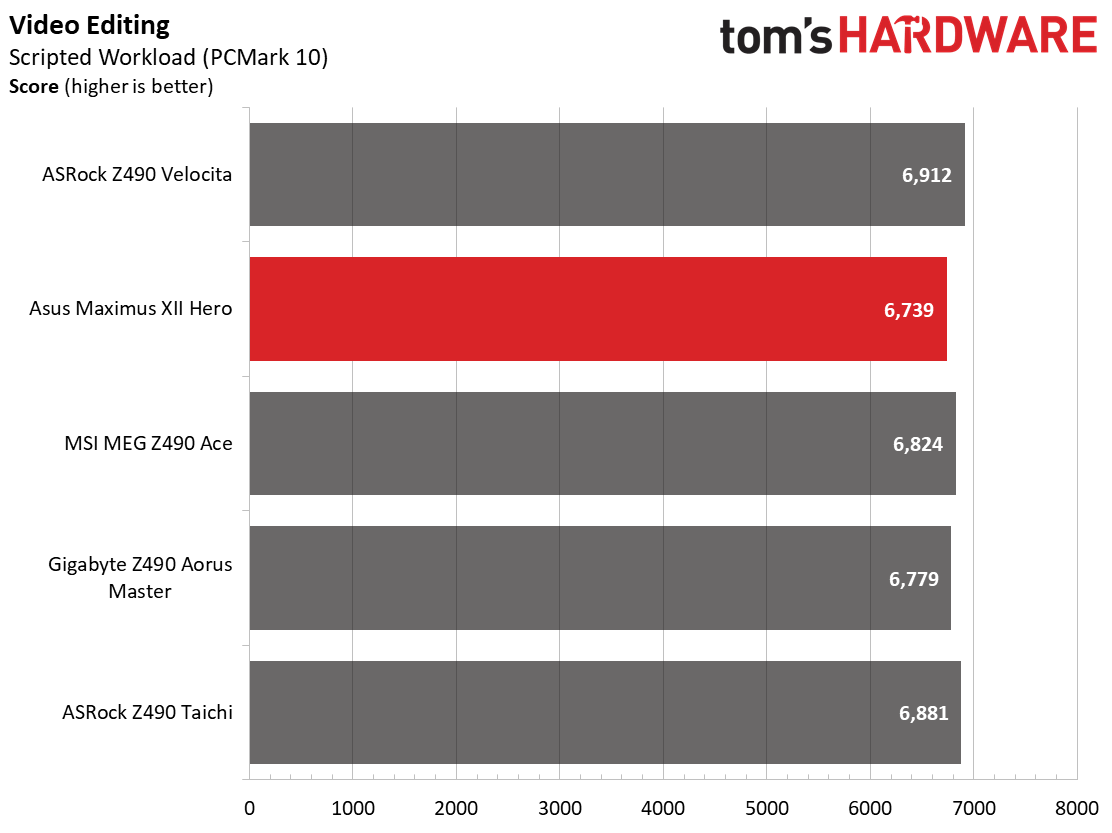
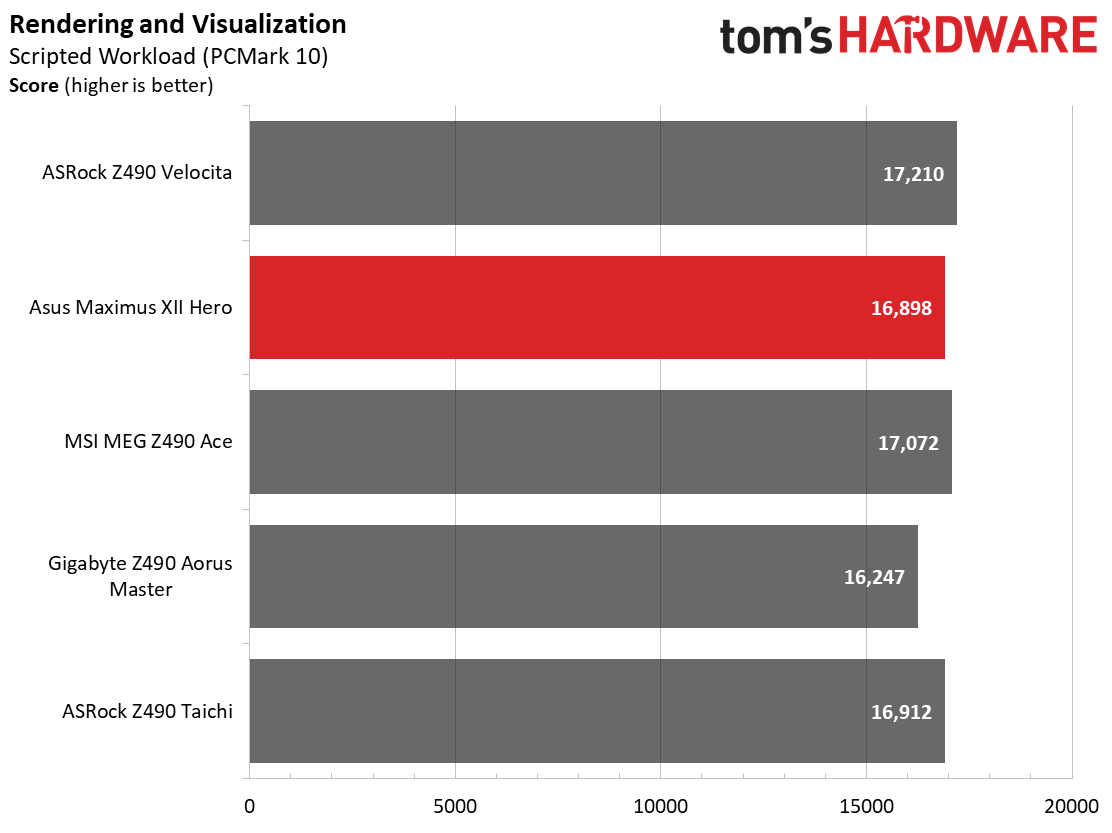
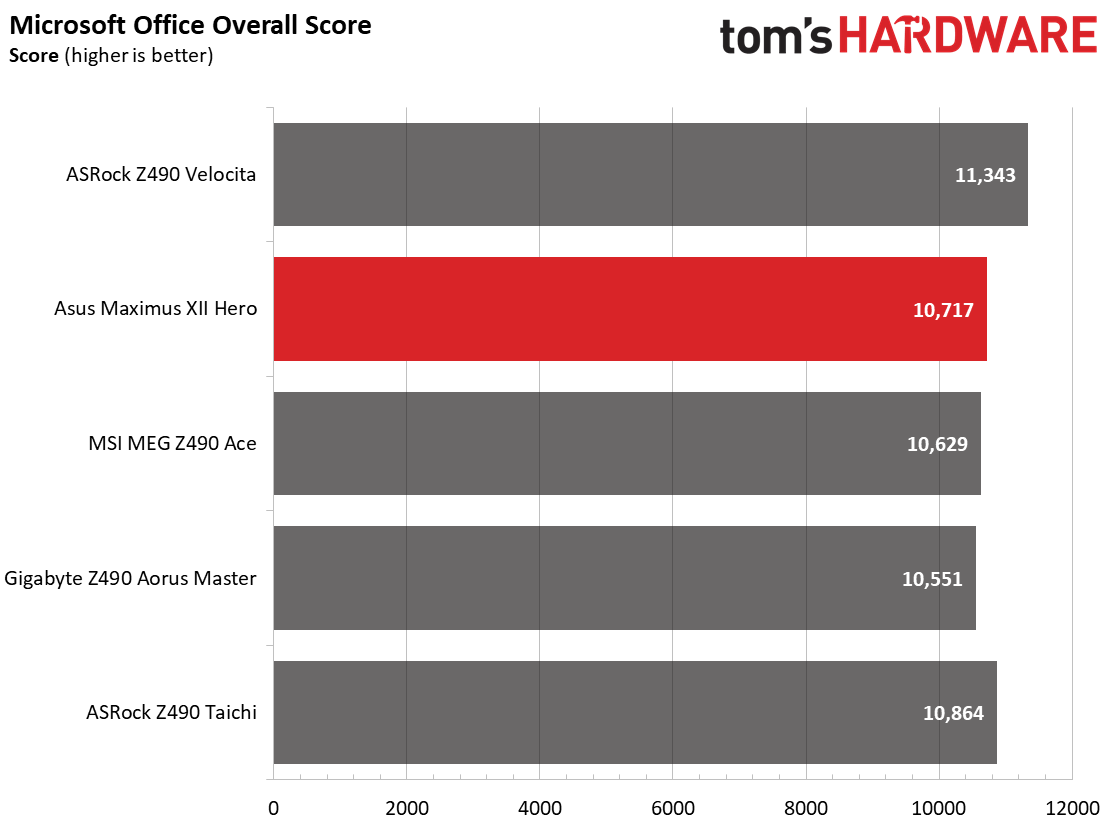
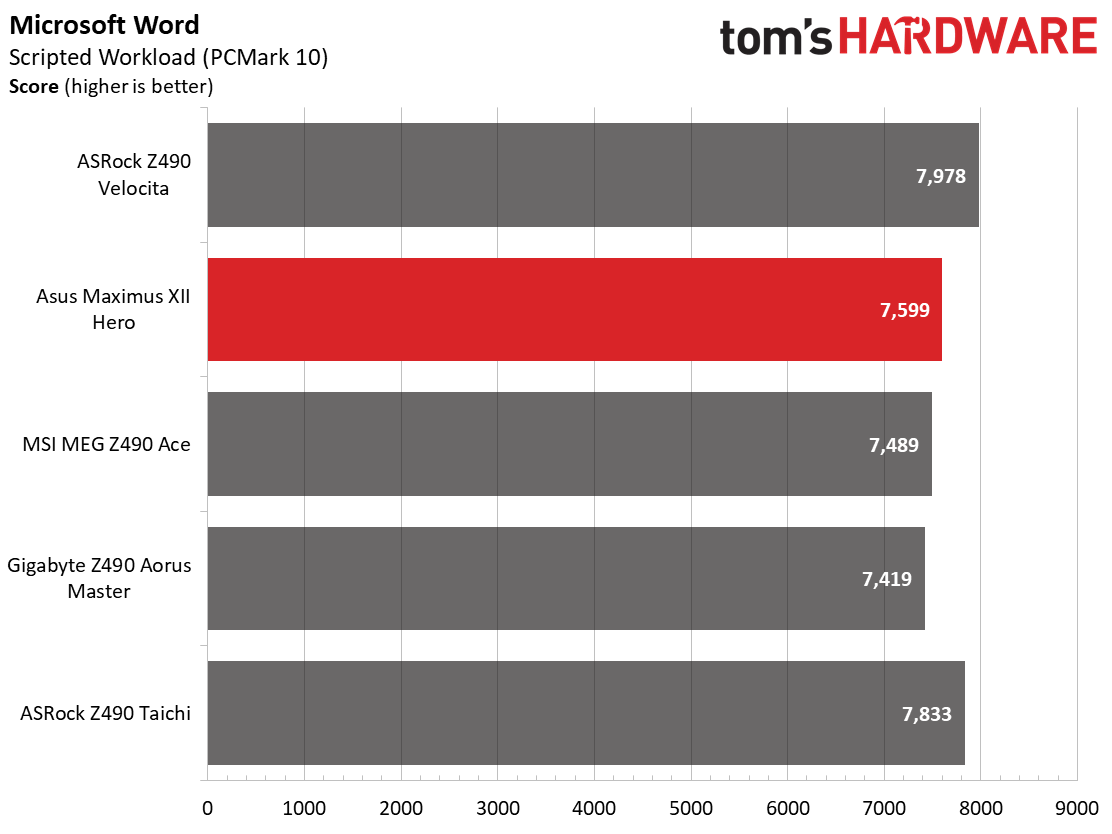
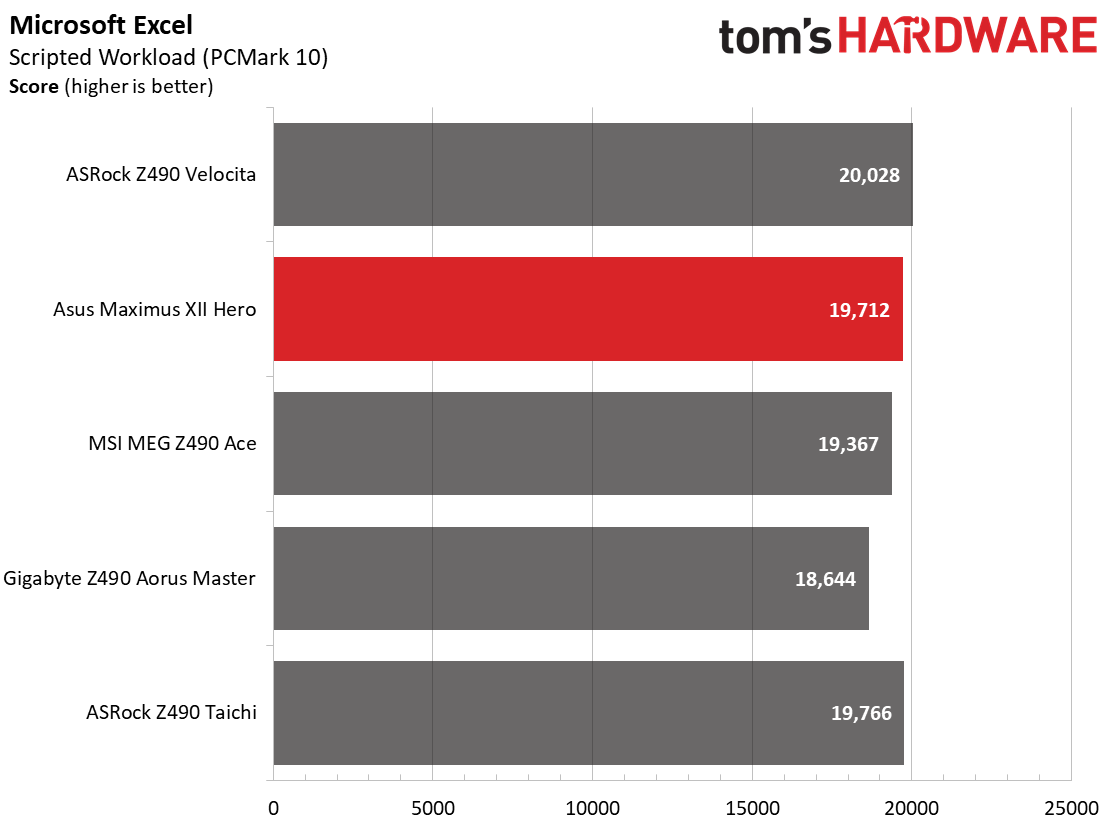
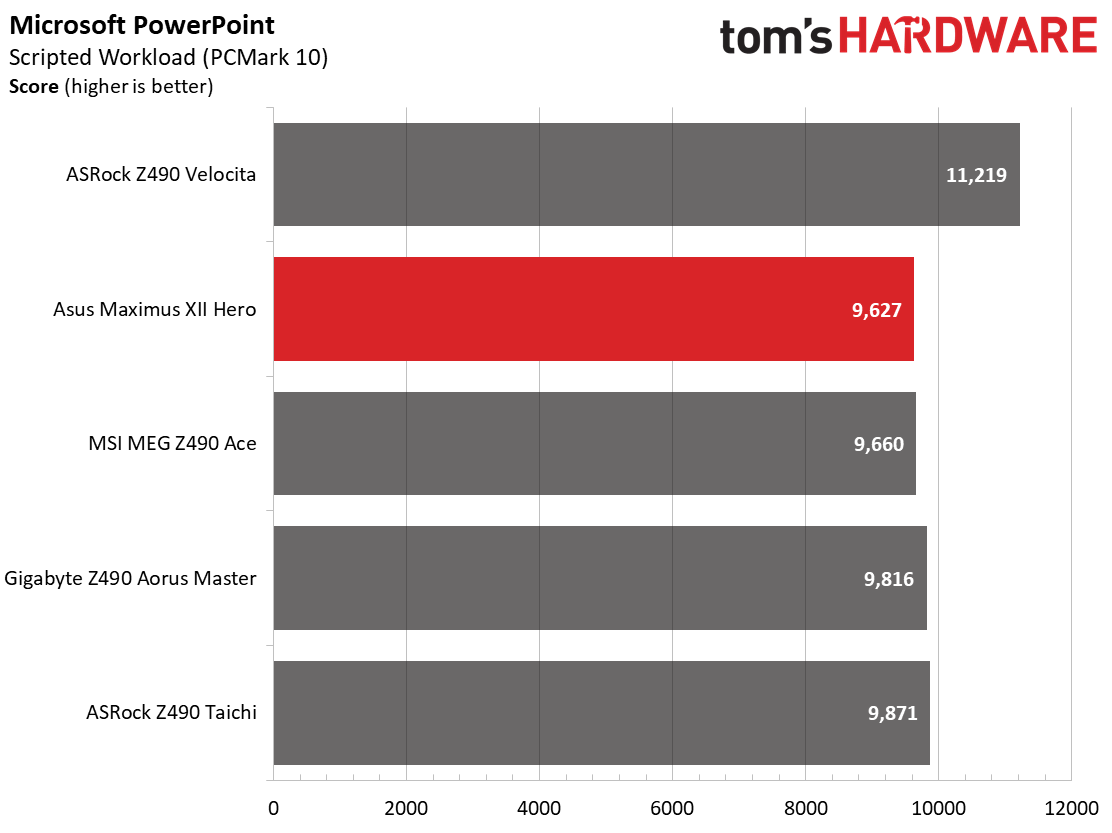
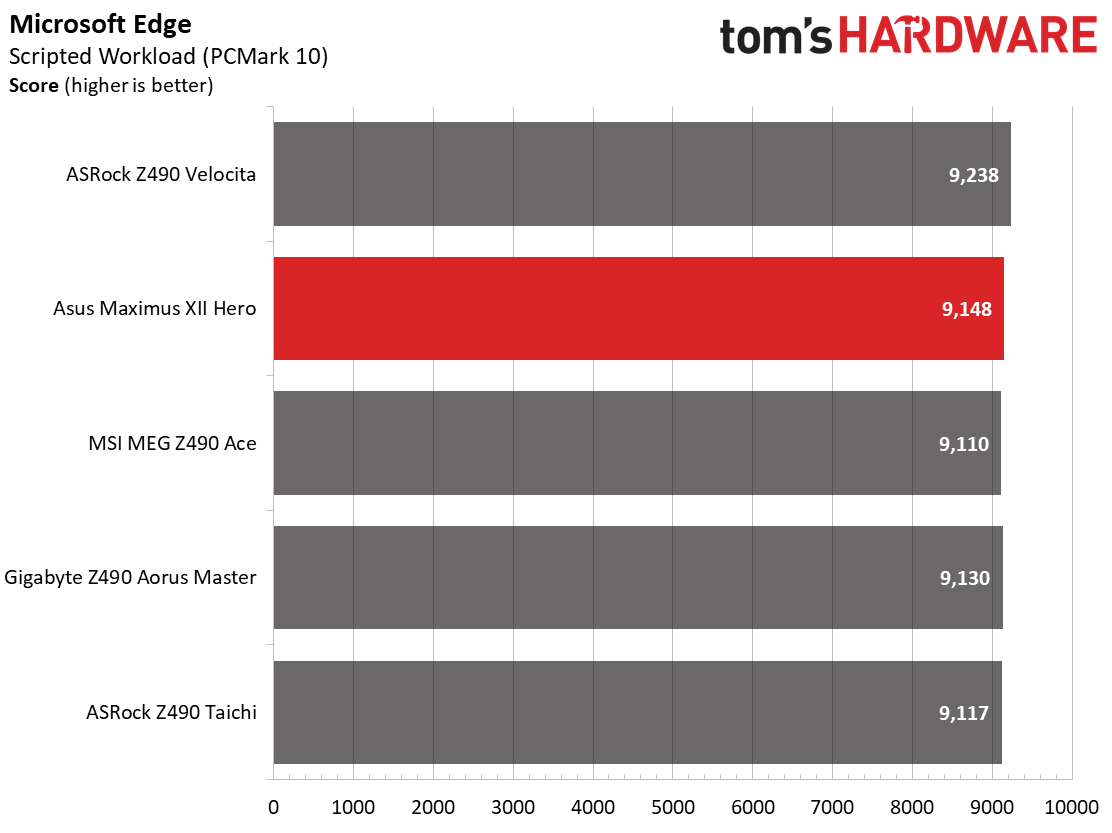
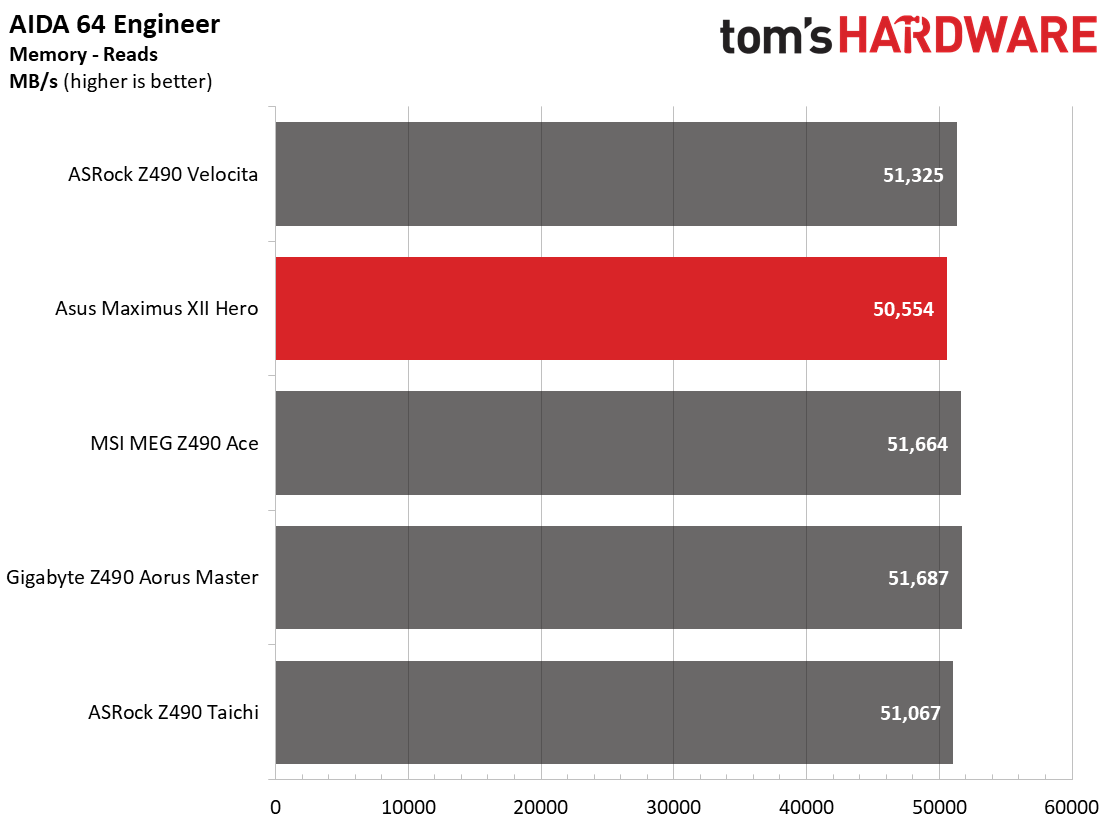
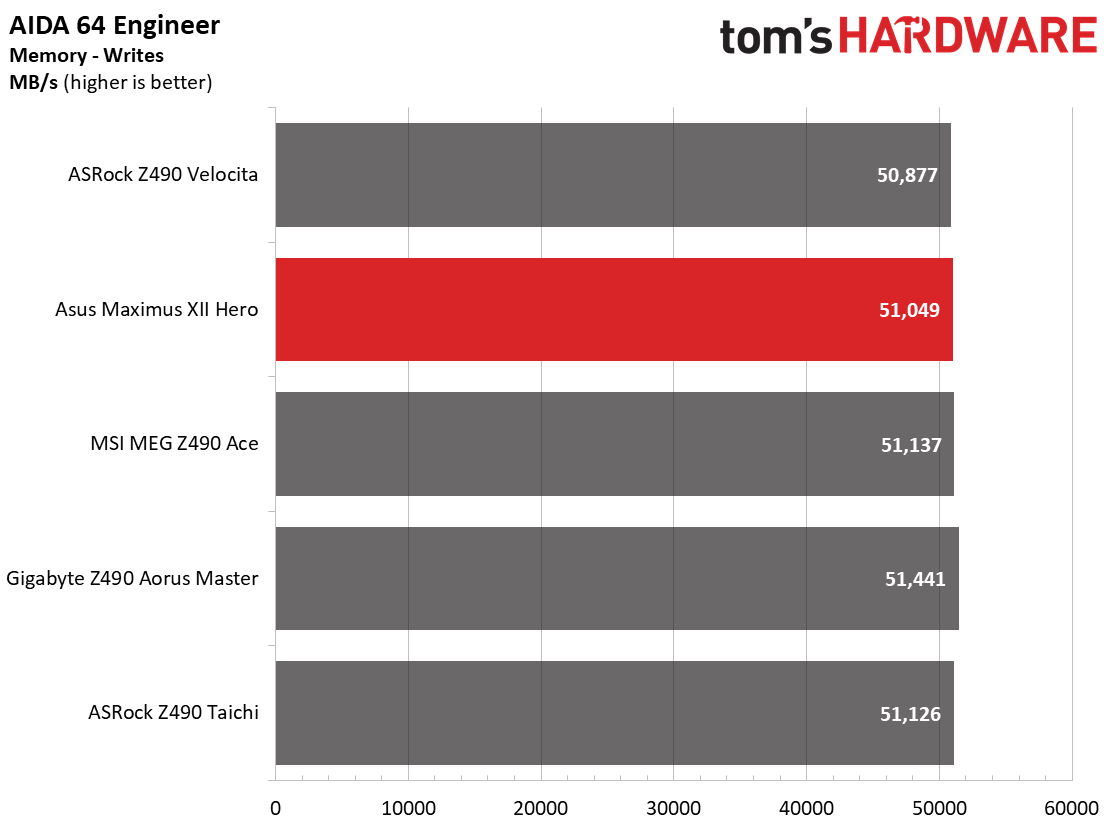
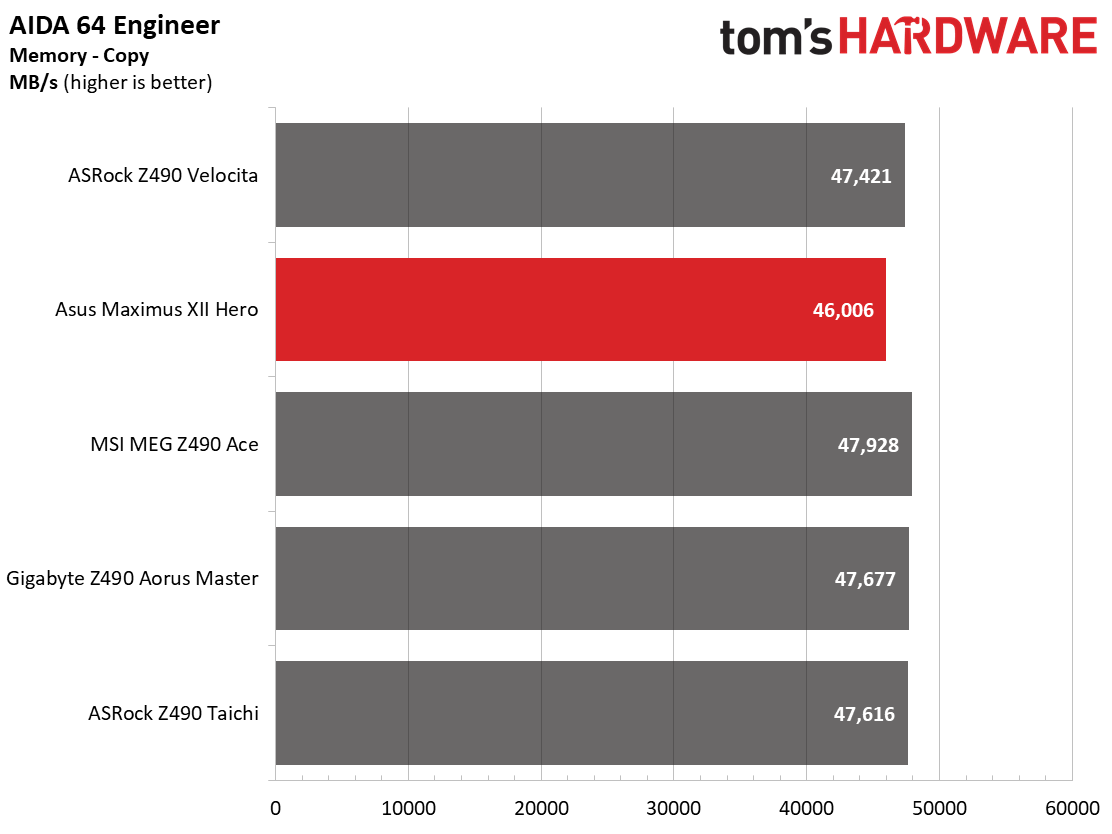
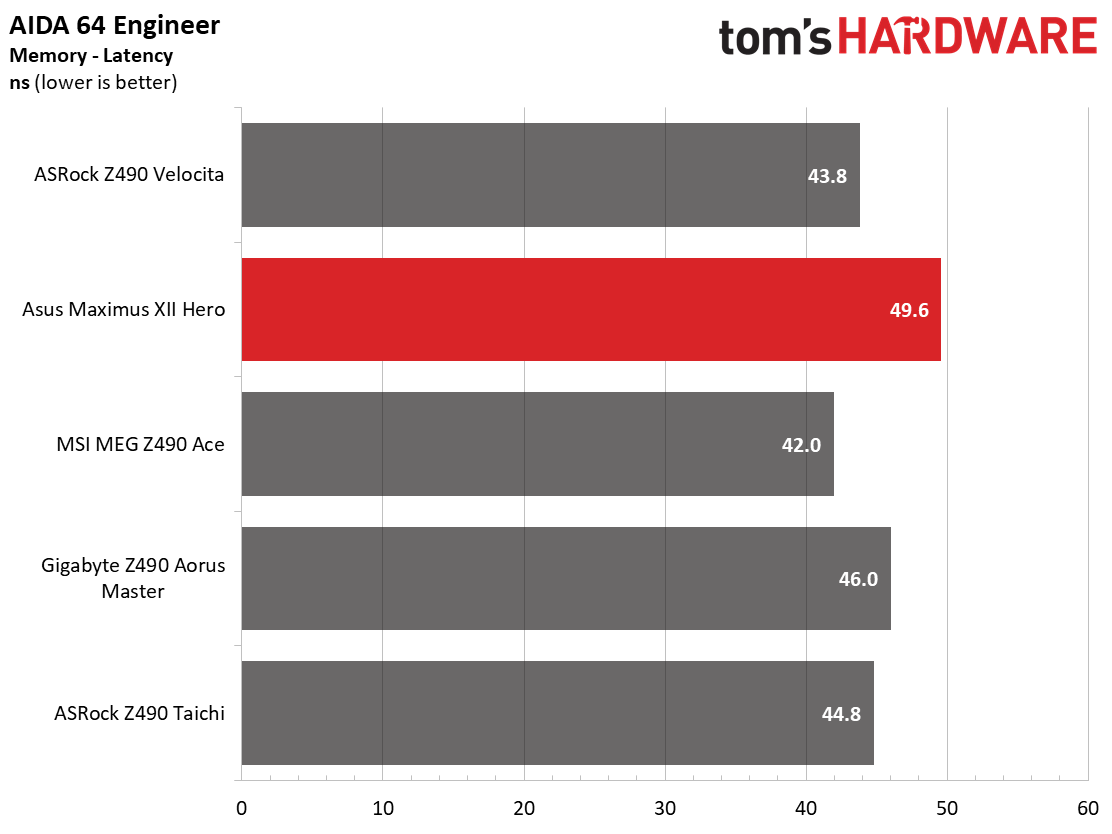
In our synthetic benchmarks, The Asus ROG Maximus XII Hero performed well, winning some and losing some against the other boards we’ve tested so far. No score was out of line comparatively.
Timed Applications
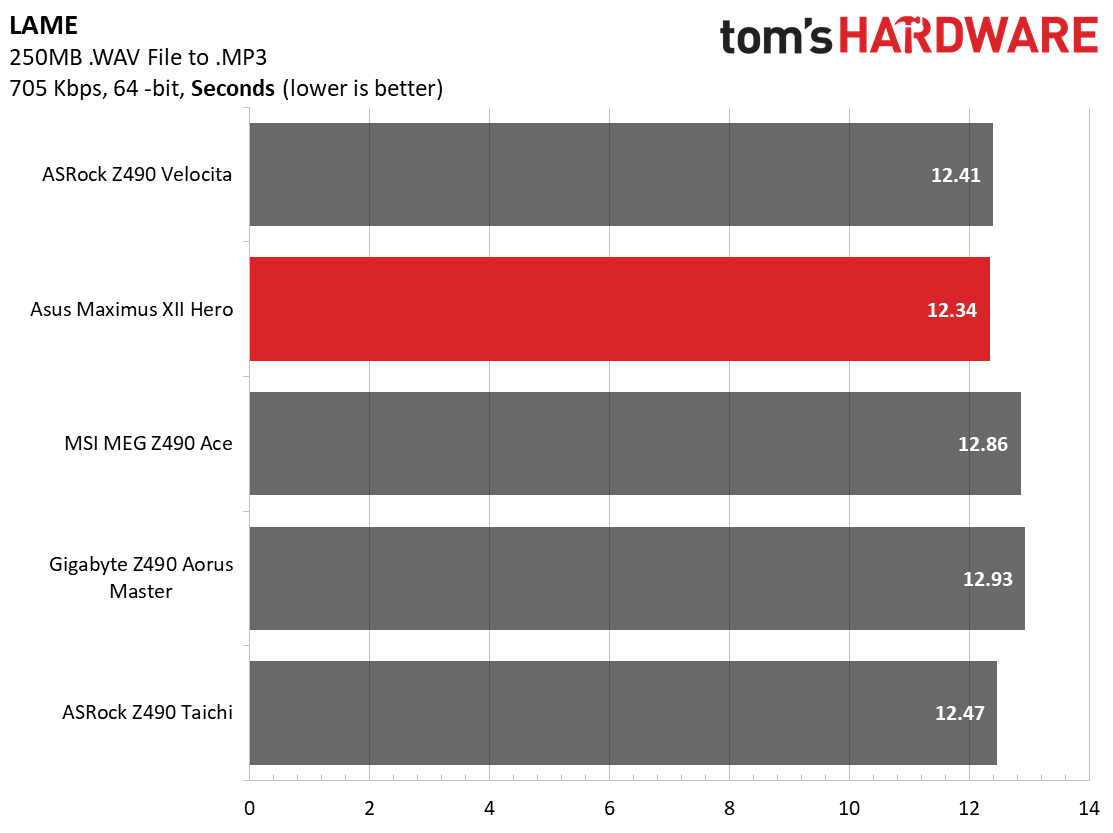
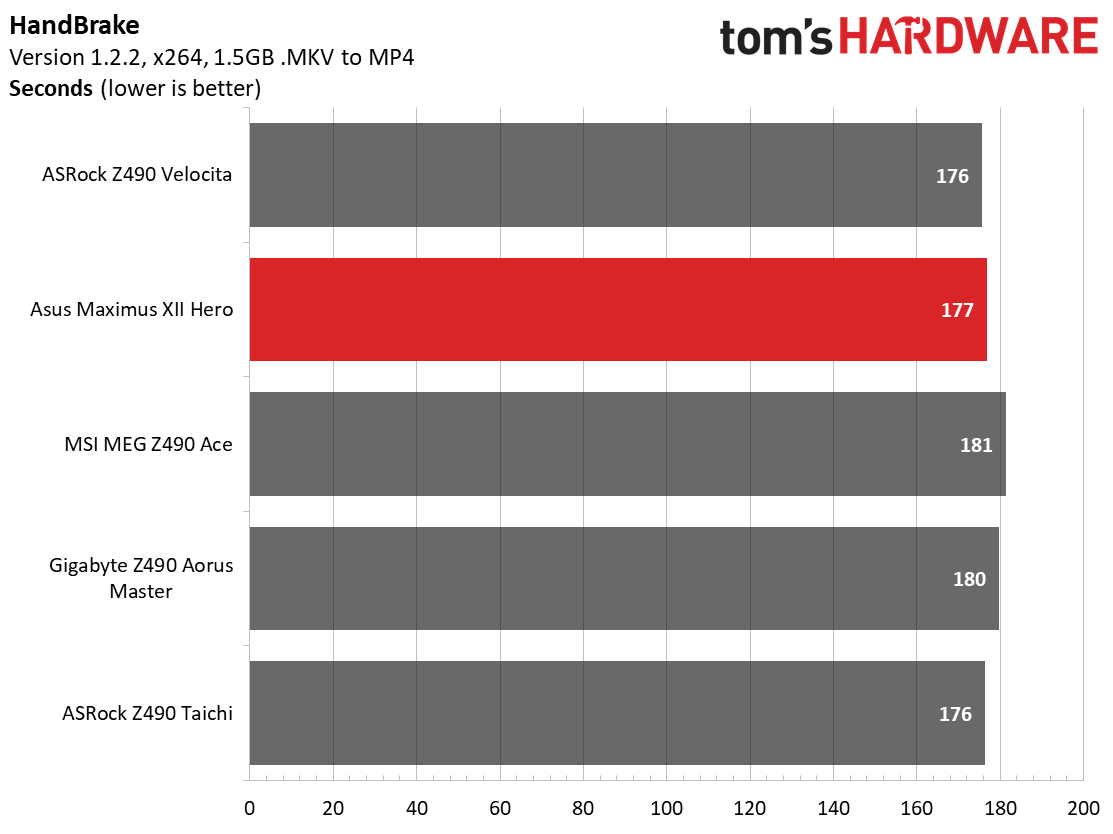
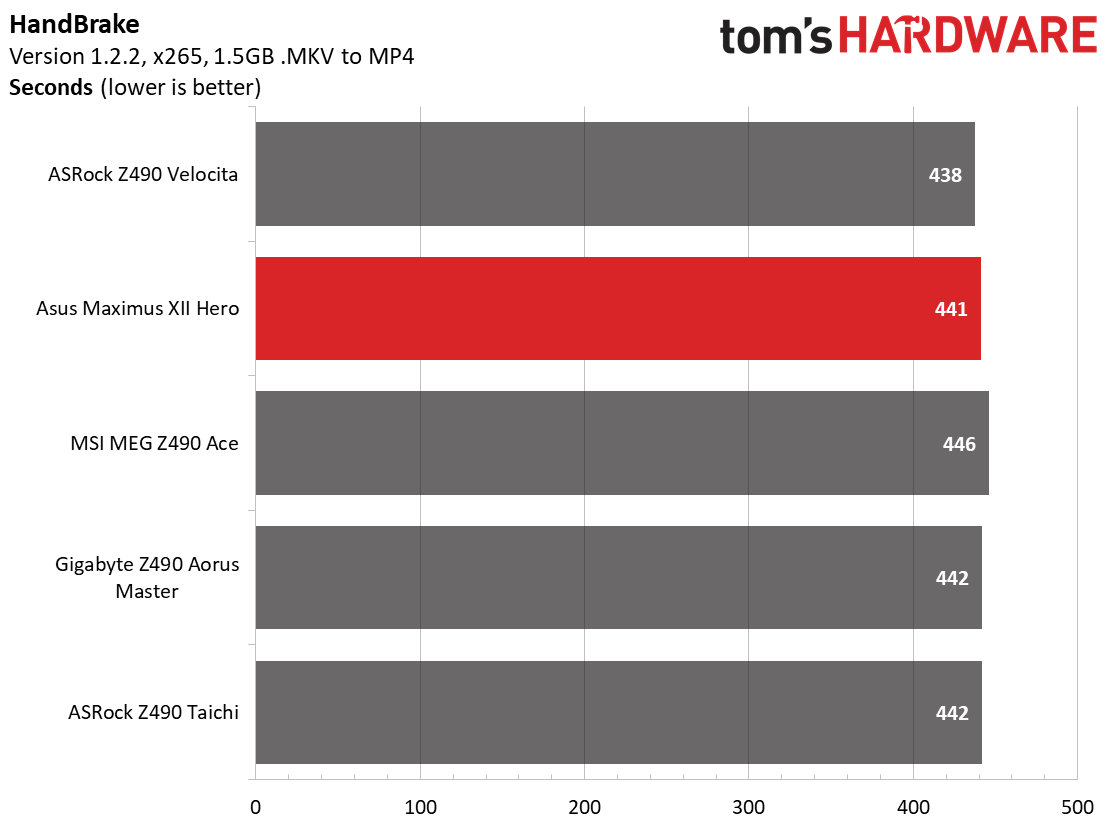
Our timed applications show the Velociata, Taichi, and Hero are a few seconds faster in the x264 portion of the Handbrake test, with little difference in x265. The LAME testing was the Hero’s best result, the fastest of the bunch (albeit by a small margin). In Corona, the Hero was among the fastest, though again the results are all quite close.
3D Games and 3DMark
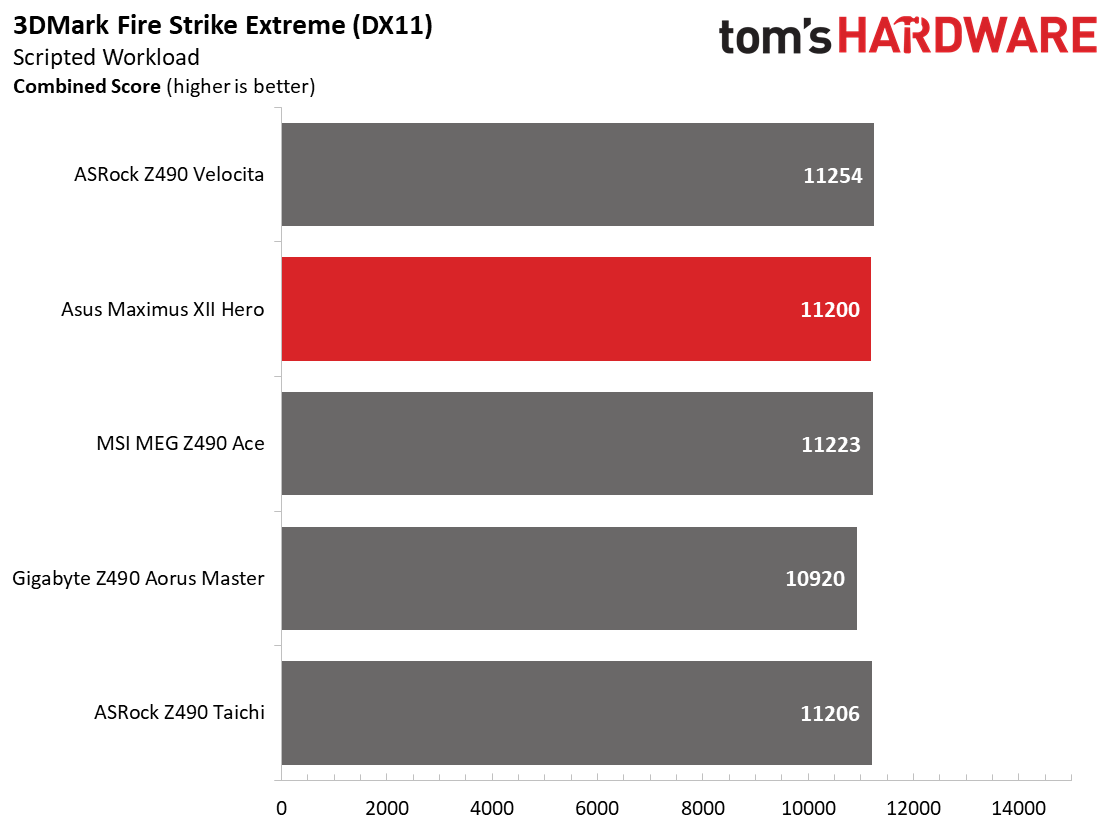
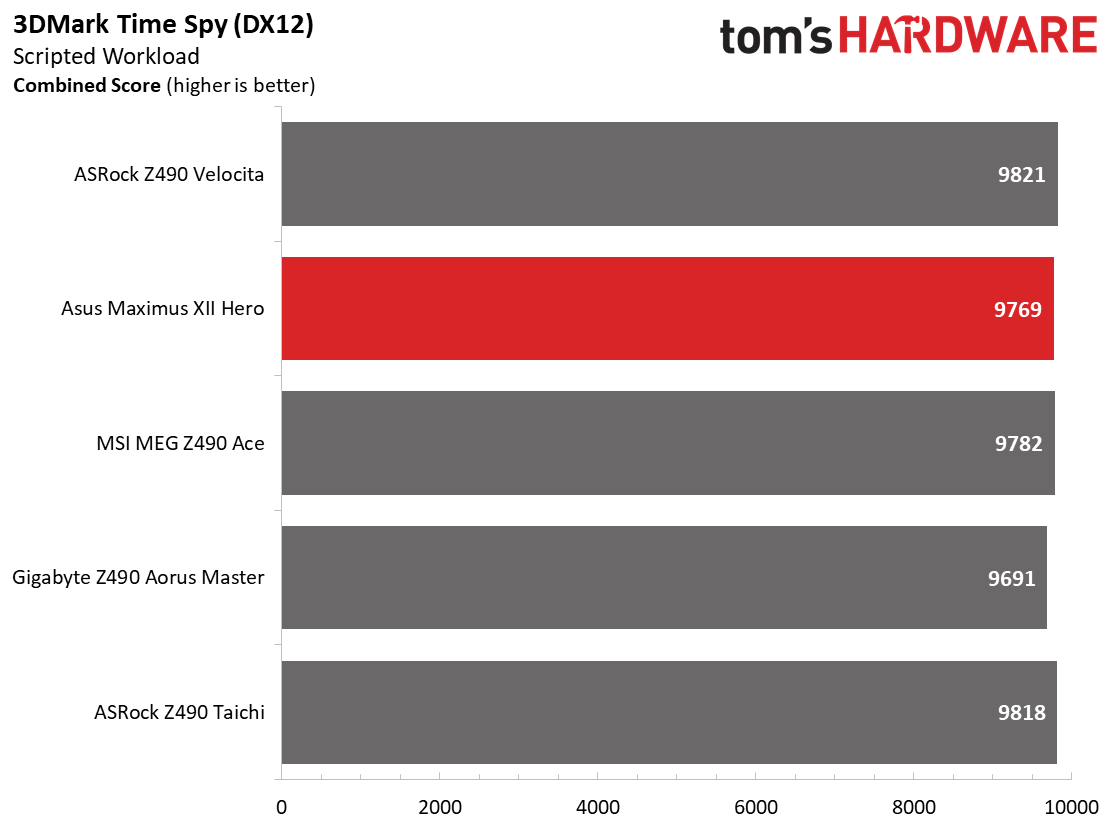
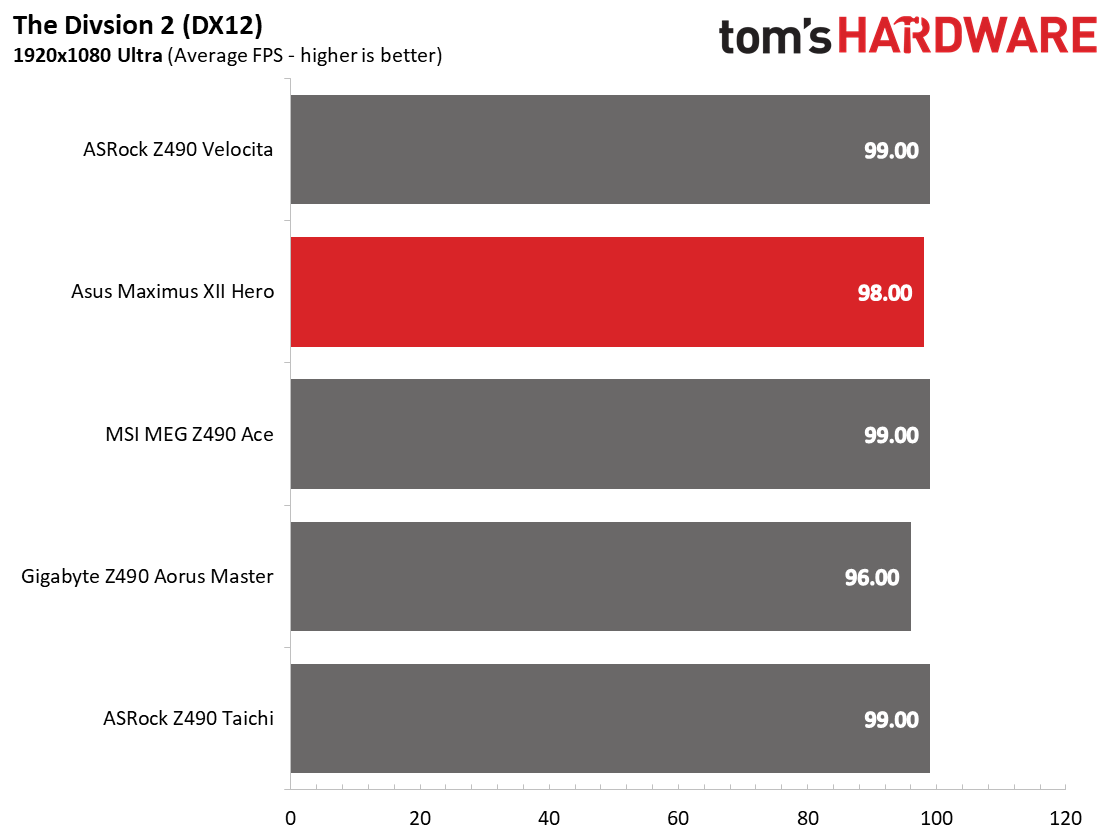
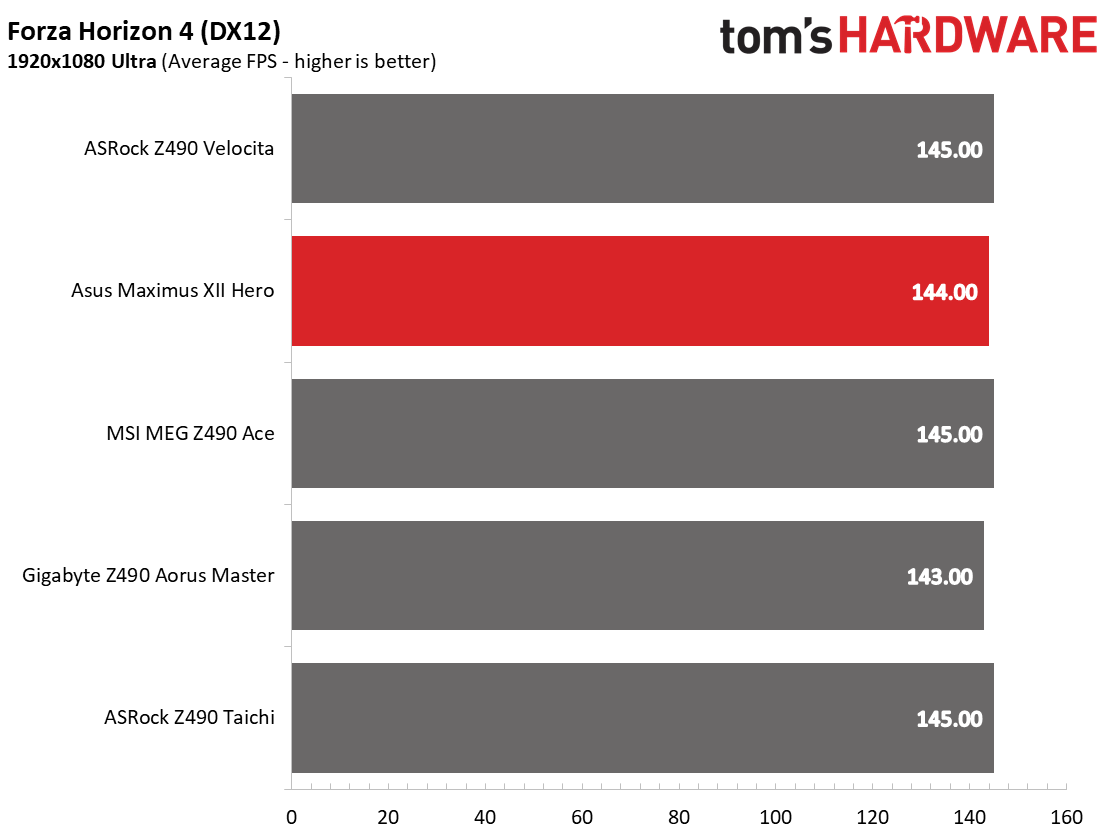
We’ve recently updated our game tests to more modern titles The Division 2 and Forza Horizon 4. The games are run at 1920x1080 resolution using the Ultra preset. As the resolution goes up, the CPU tends to have less of an impact and most games. The goal with these settings is to determine if there are differences in performance at the most commonly used resolution with settings most people use or at least strive for.
In both 3DMark tests and the games, the Hero landed where expected, close to most other results. Nothing out of the ordinary here.
Get Tom's Hardware's best news and in-depth reviews, straight to your inbox.
Power Consumption / VRM Temperatures
Our first glimpse of power use for this platform and the Core i9-10900K may be a bit shocking to some. With loads reaching almost 200W at stock speeds (because the boards allow for higher draw than intel spec), many users will be hard-pressed to keep these cool and get the most out of the chip. For power testing, we used AIDA64’s System Stability Test with Stress CPU, FPU and Cache enabled using peak power consumption value. The wattage reading is taken from the wall via a Kill-A-Watt meter to capture the entire ecosystem. The only variable that changes in these reviews is the motherboard; all other parts are the same.
The Asus ROG Maximus XII Hero (Wi-Fi) test system idled at 54W, while using 270W under load (with the actual load wattage for the CPU at 197W, according to HWInfo64). At both idle and load, the Hero was the second-most-efficient board of those we’ve tested so far.
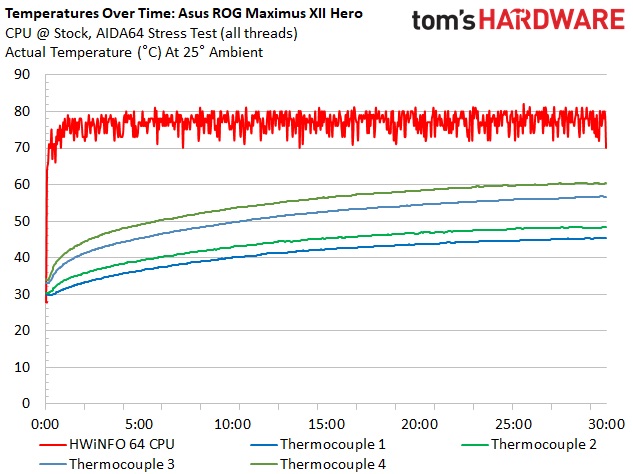
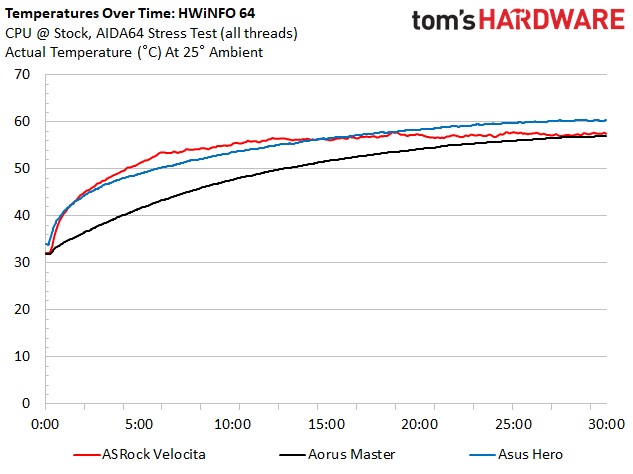
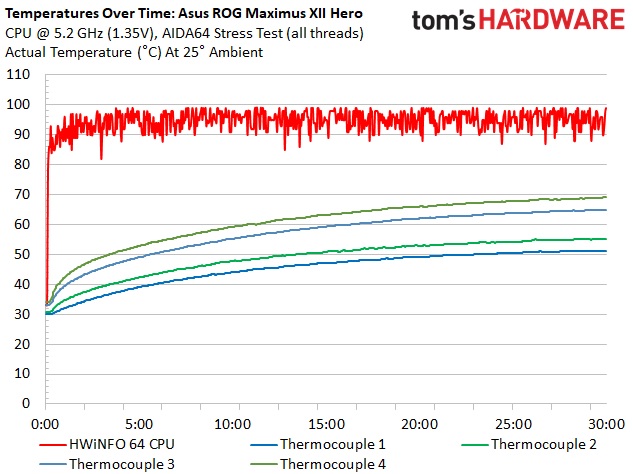
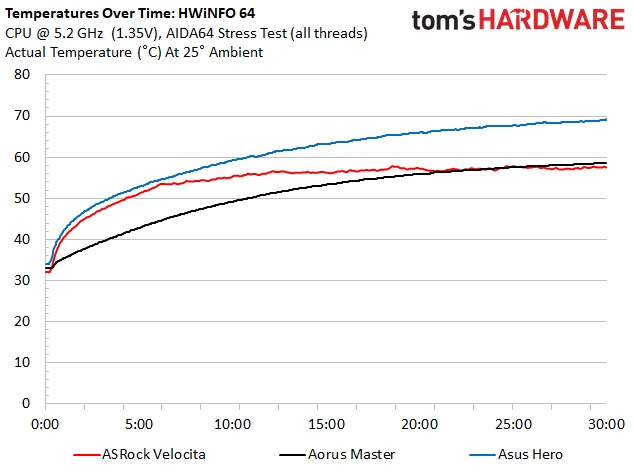
The Hero’s large heatsinks worked well, keeping the VRMs well within operating parameters at stock and while overclocked. During stock operation, the VRMs peaked at 61C, and while overclocked they reached 70C. These temperatures are warmer than the Velocita (with a fan) and the Aorus Master, but still in a completely acceptable range.
Overclocking
From our other Z490 motherboard reviews, we know the CPU sample lets us run up to 5.2 GHz at ~1.35V while keeping the CPU somewhere around 90 degrees Celsius. The Hero reached this as expected without issue. The only minor issue we ran into was excessive vdroop at stock settings. This was easily mitigated by using a more aggressive LLC setting, but still surprising to see such a big difference.
On the memory side, we swapped out the GSkill Trident Z Neo DDR4 3600 sticks with a Trident Z Royal kit rated at DDR4 4000. Just as with other boards so far, we were unable to stabilize 4x8GB at that speed, but 2x8GB DDR4 4000 wasn’t a problem.
Final Thoughts
Asus’ ROG Maximus XII Hero is priced at $399.99 which is at the top of our recent review heap along with the MSI MEG Z490 Ace that is priced the same. The Aorus Master ($389.99) and ASRock Z490 Taichi ($369.99) cost a bit less. We know all of these boards have enough VRM capability behind them to overclock the flagship i9-10900K to its thermal limits. This leaves the appearance and features the major deciding factors since performance and price are close
On the aesthetics front, the Hero, like the Aorus Master, looks better than their Z390 predecessors. The additional heatsink for the third M.2 slot and design change gives the Asus board a more high-end appearance. The glossy clean look of the chipset heatsink and frosted RGBs make for a subdued and premium aesthetic. For the additional $100 over the previous version, users now get 5 GbE, three M.2 slots, USB 3.0 Gen2 (20 Gbps) Type-C port along with a more formidable VRM.
But even with that, builders are still going to be sour --and rightfully so-- about the price increase from all partners Z490 boards versus Z390. That said, features/specifications wise, there is little separating these boards. The Hero brings a 5 GbE LAN, The Aorus Master gets the fastest memory support (though the Hero is hot on its heels), and the ASRock Taichi brings its eight SATA ports. Depending on your desires, one of these will likely tip the buying decision one way or the other. Asus delivers a good all-around board with the ROG Maximus XII Hero, bringing all of what most users need and plenty of appreciated extras at the $400 price point, including capable power delivery, three M.2 slots, good overclocking, and high-end looks. If you like its looks and can make use of the fast 5Gb Ethernet and 20Gbps USB 3.2 Gen2, it’s well worth considering.
MORE: Best Motherboards
MORE: How To Choose A Motherboard
MORE: All Motherboard Content

Joe Shields is a staff writer at Tom’s Hardware. He reviews motherboards and PC components.
-
HubertTechOn Did the F4-3600C16Q-32GTZNC memories work immediately at 3600MHz? in the XMP profile?Reply
